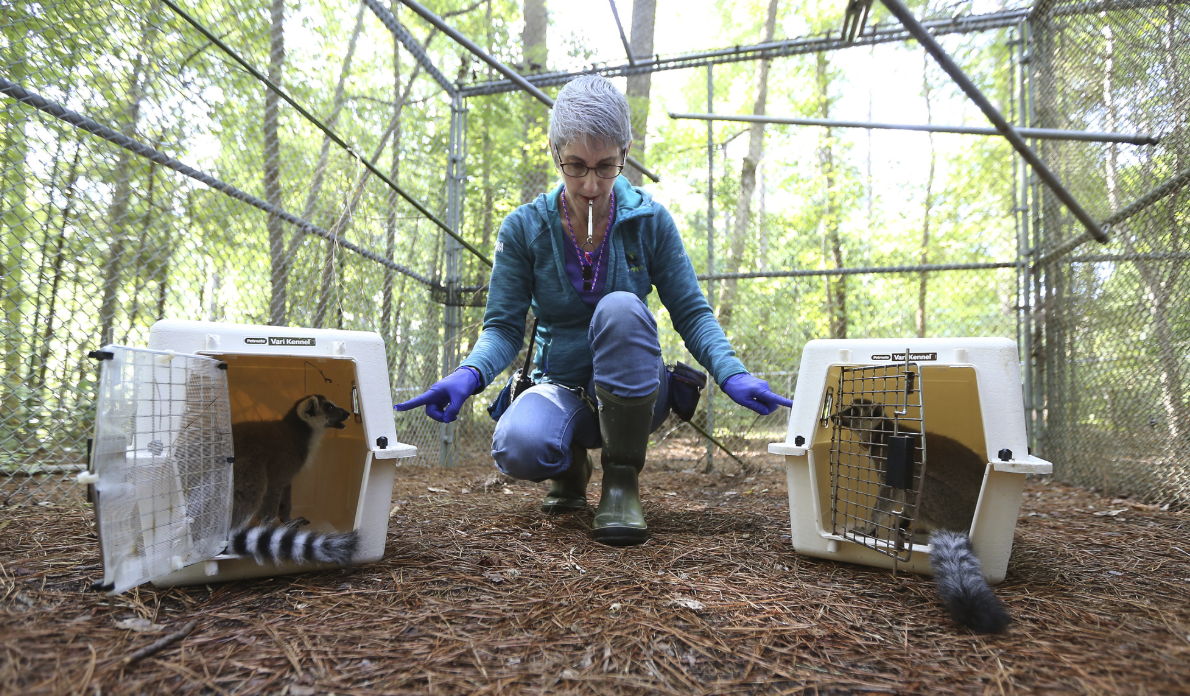
Meg Dye, the DLC’s Curator of Behavioral Management and Welfare, conducts a training session with ring-tailed lemurs Teres and Persephone. When they enter the kennel, the lemurs are immediately rewarded with a brief whistle (which marks the behavior as “good”) followed by a favorite treat, such as a piece of sliced grape.
In 2006, the DLC established an animal training program to complement the center’s husbandry and research programs. Utilizing positive reinforcement training (also known as reward-based or force-free training), the animal care staff began teaching the lemurs how to participate in their own health care and in non-invasive research. Today, behaviors such as voluntarily sitting on a scale or allowing a pregnancy check by a DLC veterinarian have become positive interactions with the animal care staff and help us provide the lemurs with the highest quality of care.
A classic example of how training is beneficial to both the lemur and her caretakers is when a lemur needs a regular check-up by a veterinarian. Lemurs are trained to enter carrier kennels for transportation from their enclosure to the veterinarian’s room. By using this method, neither sedation nor handling of the animals is required.
Additionally, choosing to participate in research, such as learning to touch a red square for a color discrimination project, allows the lemurs to be relaxed and confident while simultaneously allowing researchers to collect data in a time efficient manner. Both the husbandry and research training sessions double as a stimulating form of enrichment for the lemurs as they become engaged students who eagerly participate in the opportunity to learn something new.
“Training is based on mutual trust between the technician and lemur,” says the DLC’s curator of behavioral management, Meg Dye. “Similar to students in a classroom, training sessions consist of small achievable steps that set the lemur up to succeed. We’ve all experienced that wonderful teacher who made learning fun. That is exactly what each technician does as they teach the lemurs to participate in husbandry and research behaviors.”
It’s important to note that all training is 100% voluntary for the DLC’s lemurs: they are not required to participate if they’re not interested. In addition, any research trials outside a lemur’s home enclosure must be conducted in the presence of a DLC staff member to ensure the lemur’s safety and well-being. If the lemur isn’t interested in participating or appears stressed, she’ll be immediately returned to her home enclosure.

By using positive-reinforcement training to teach husbandry behaviors such as voluntarily sitting on a scale, health exams become positive interactions with the animal care staff and help us provide the lemurs with the highest quality of care—with as little stress on the animals as possible. (And of course, plenty of tasty treats!)

